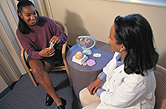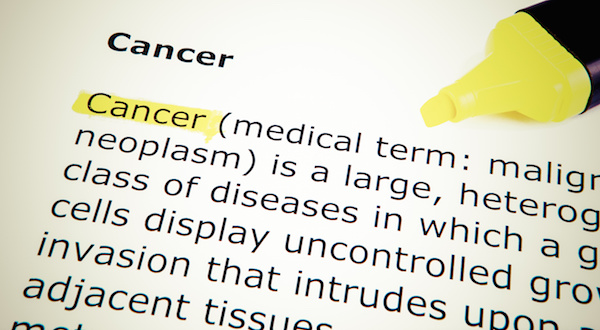
MONDAY, June 14 (HealthDay News) — Doctors may be giving the Pap test too often to women at low risk of cervical cancer, new research finds.
Guidelines from the U.S. Preventive Services Task Force, the American Cancer Society and the American College of Obstetrics and Gynecology (ACOG) now recommend that women over age 30 who’ve had three normal Pap tests wait three years before getting another test. Pap tests, or smears, look for abnormal cells that can be a sign of cervical cancer.
But a survey of about 1,200 primary care doctors, conducted by the U.S. Centers for Disease Control and Prevention, found that fewer than one-third of doctors abide by those recommendations and instead are recommending more frequent screening.
Given the hypothetical situation of a 35-year-old woman with no new sex partners and three normal Pap tests in a row, only 32 percent of doctors said they would wait three years before doing another Pap test, the study found. Instead, an almost identical percentage said they would recommend the woman have her next Pap test in one year.
The American Cancer Society and ACOG also recommend that a woman over 30 who has had a normal Pap and negative (normal) human papillomavirus (HPV) test can extend screening to three years, according to the study. (The U.S. Preventive Services Task Force has not issued HPV test guidelines).
While most women who contract HPV clear the virus on their own, a small number will develop abnormal cells that can become cancerous, researchers said.
When doctors were asked about that same 35-year-old woman this time having one normal Pap and one negative HPV test, only 19 percent of doctors said it would be OK to wait three years to do another screening, while 60 percent said they would continue to recommended annual screening.
The study is published in the June 14 issue of the Archives of Internal Medicine.
“The CDC is trying to promote responsible cervical cancer screening,” explained lead study author Dr. Mona Saraiya, a CDC medical epidemiologist. “There are no guidelines that say doctors have to do annual Pap testing for low-risk women.”
And there are real downsides to over-screening. These include unnecessary cost for the test itself, anxiety, and unnecessary follow-up testing, such as colposcopy, Saraiya said.
The study is part of an ongoing series in the journal called “Less is More,” which deals with issues of overtreatment for certain conditions. ACOG revised its cervical cancer screening guidelines in late 2009 after determining that outcomes, including cancer deaths, were not being improved by annual screening and that doctors could safely extend the interval.
Complicating the message about the annual Pap test is that, in the minds of many women, cervical cancer screening and their annual gynecological appointment are one and the same, Saraiya said. The guidelines address only the cervical cancer screening, not the rest of the exam, Saraiya said, and the two should be “de-linked.”
While many women equate the two, ob-gyns do much more than a Pap test during an exam, including a breast and pelvic exam, discussion of menstruation, contraceptive needs or menopausal symptoms, and other health needs, said Dr. Steven R. Goldstein, an obstetrician-gynecologist at New York University Langone Medical Center.
“The Pap smear is a huge success story and, for better or worse, most women equate their annual exam with their Pap smear,” Goldstein said. “If the message goes out that women will only need Pap smears every three years, most will think they only need a gynecological exam every three years, which is not true.”
And guidelines aside, many gynecologists are hesitant to stop recommending that women get an annual Pap test, Goldstein added. Invasive cervical cancer has dropped precipitously over the last 60 years largely as a result of the test, he said. “It’s one of the biggest triumphs of modern medicine,” Goldstein said.
When England widened its screening interval for cervical cancer, there was a small uptick in cases, he noted. “From an epidemiological point of view, [lengthening the screening interval] may be the most cost-efficient way to proceed,” Goldstein said. But, he added, “try to explain that to the person who has just become that increased case of cervical cancer.”
During their annual exam, women should discuss whether or not they need a Pap smear with their doctor, who will make the call based on age, Pap smear history and HPV status, among other factors, Goldstein said.
In the meantime, here are current Pap test guidelines from ACOG:
- Women are advised to get their first test at age 21 and then every two years until age 30.
- Women over 30 and older who’ve had three normal Pap tests and no abnormal history can be re-screened every three years; this also applies to women who’ve had a normal Pap and a negative HPV test.
- After no abnormal Pap result for 10 years and three or more negative results consecutively, women can stop the test at age 65 or 70.
More information
There’s more on cervical cancer screening at the U.S. Centers for Disease Control and Prevention.

